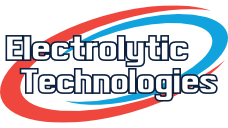
Metallurgical

Electrolytic Technologies can help you with all your metallurgical and chemical engineering applications. Many metallurgical processes require chlorine gas for refining or purification. Klorigen™ chlorine generation systems alleviate the risk inherent with the usage of large quantities of pressurized chlorine gas in these facilities.
Klorigen™ systems produce chlorine gas on-demand and under vacuum, eliminating the storage and use of pressurized chlorine gas and the risks associated with chlorine gas currently facing many metallurgical applications. In addition, Klorigen™ systems produce a 15% sodium hydroxide (“caustic”) co-product that is commonly used elsewhere in these facilities.
With Klorigen™ on-site generation technology, chlorine and sodium hydroxide may be safely and effectively delivered on-demand, eliminating the threat of a hazardous chlorine release commonly present in the metallurgical industry.
Benefits of Klorigen™
- Systems chlorine gas at less than atmospheric pressure, virtually eliminating the possibility of a dangerous toxic gas release.
- The generated chlorine gas can be combined with co-product sodium hydroxide within the process to produce high-strength sodium hypochlorite at an operating cost that is in most cases is comparable to or less than any alternative chlor-alkali product available to the end user.
- Klorigen™ systems have a projected lifespan exceeding 20 years with minor refurbishments scheduled at five to eight-year intervals.
- The generated chemical products (elemental chlorine gas, sodium hydroxide and sodium hypochlorite) are equal if not superior in quality and efficacy to conventional bulk-supplied alternatives and comply with National Sanitation Foundation (NSF) standards (USA).
- Modular designs allow for the capacity of a system to be increased within its existing footprint by a factor of two or even three in less than one week with minimal interruption to operations.
- Every system and subsystem is designed to fit within conventional ocean-freight shipping (TEU) containers, allowing for low cost road and sea freight to the customer’s site.
- By design, the system operates at less than one atmosphere of pressure with electrodes separated by a semi-perfluorinated membrane, eliminating any risk for hydrogen explosion in either the electrolyzers or downstream in the product storage tanks.




